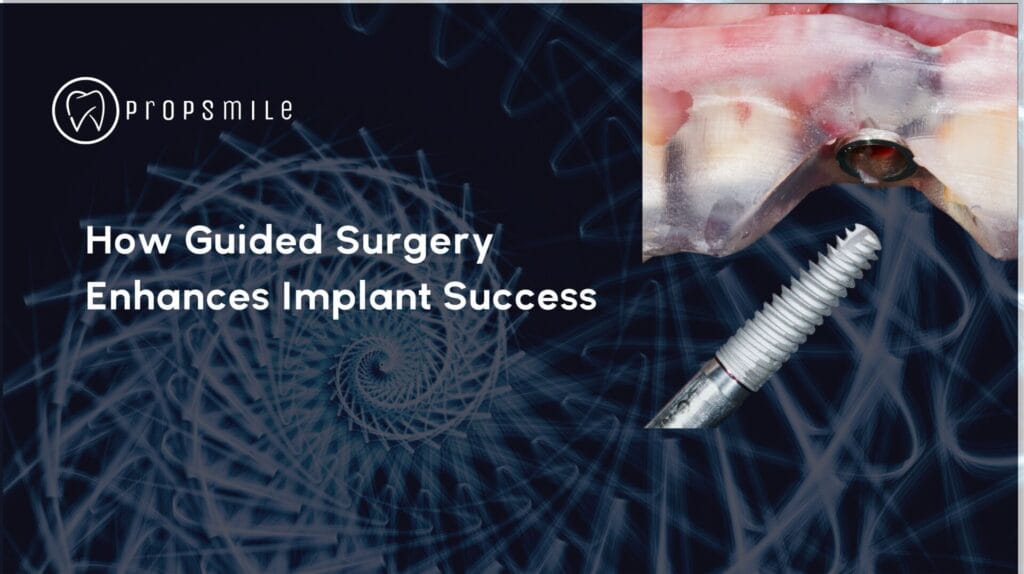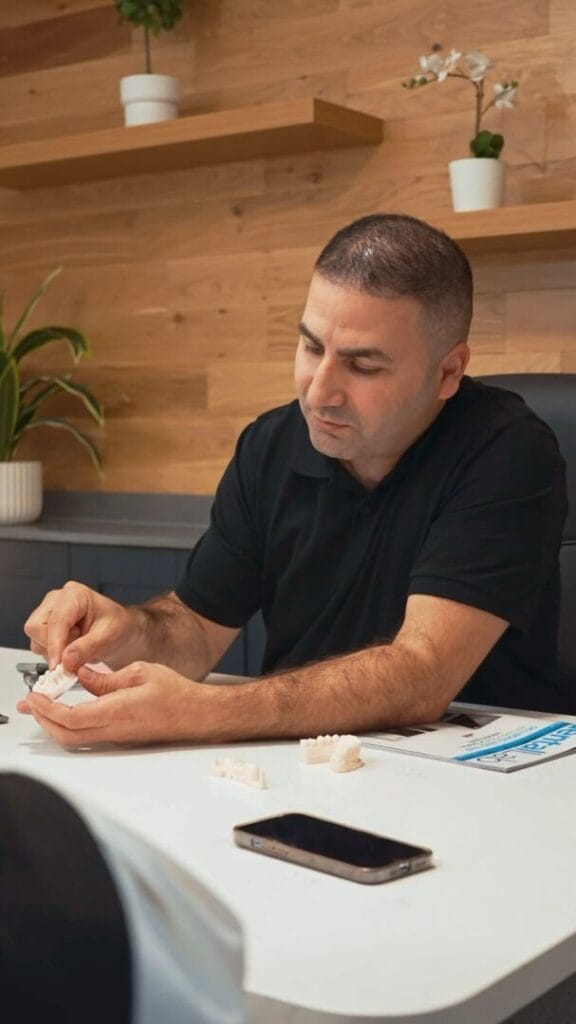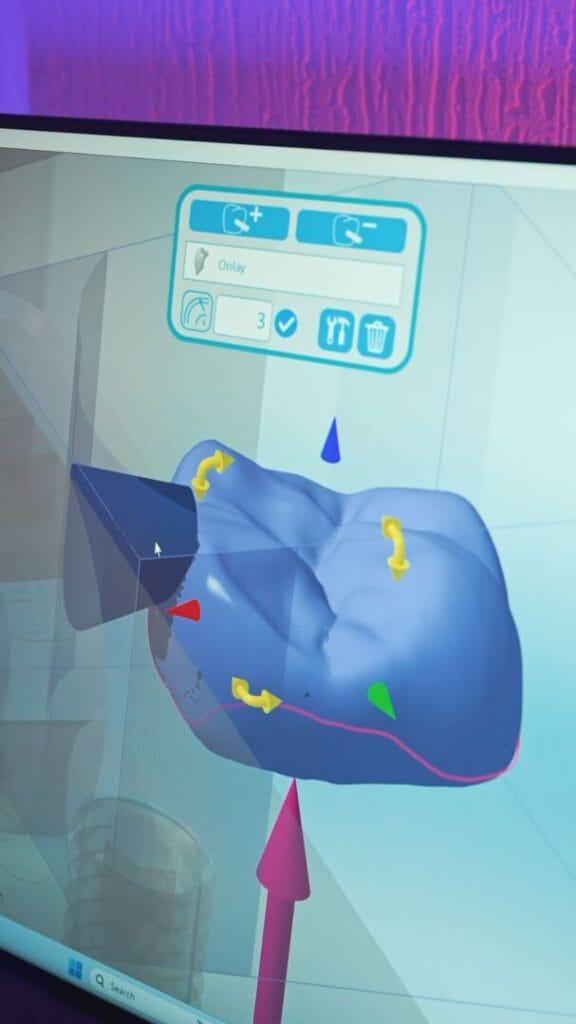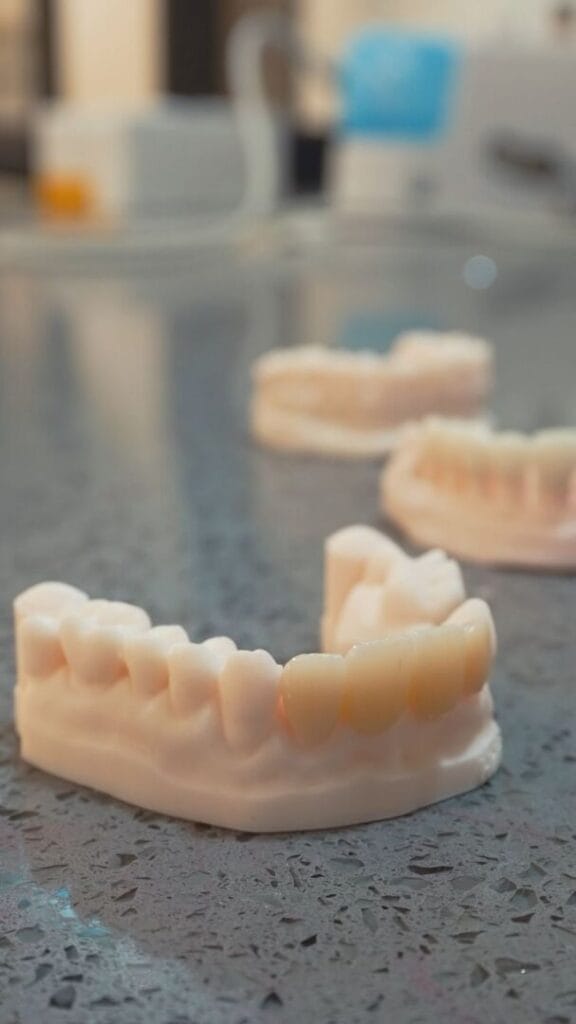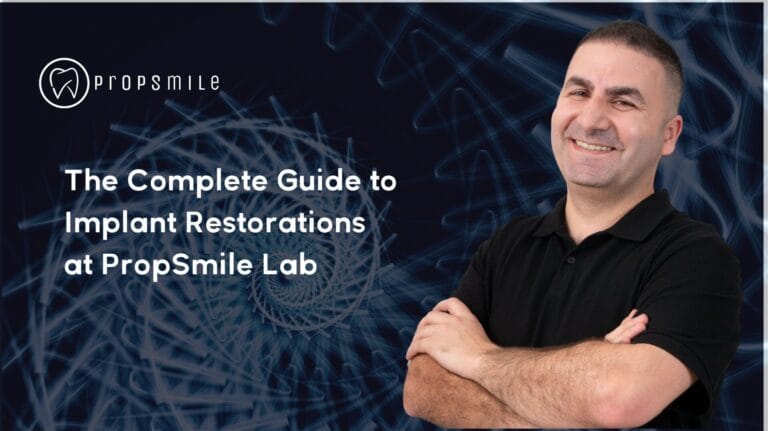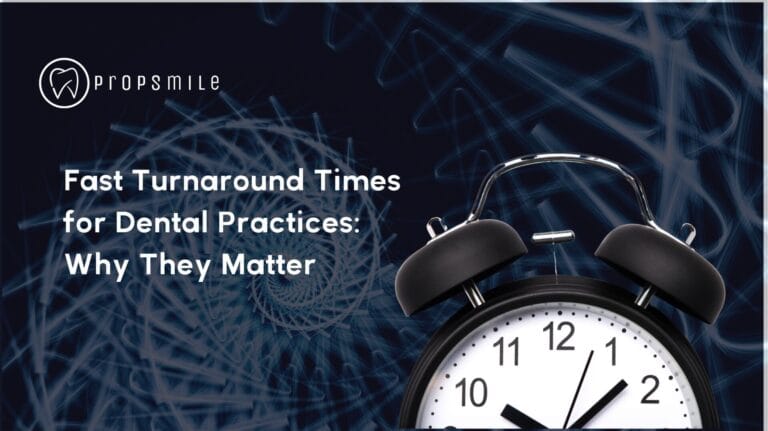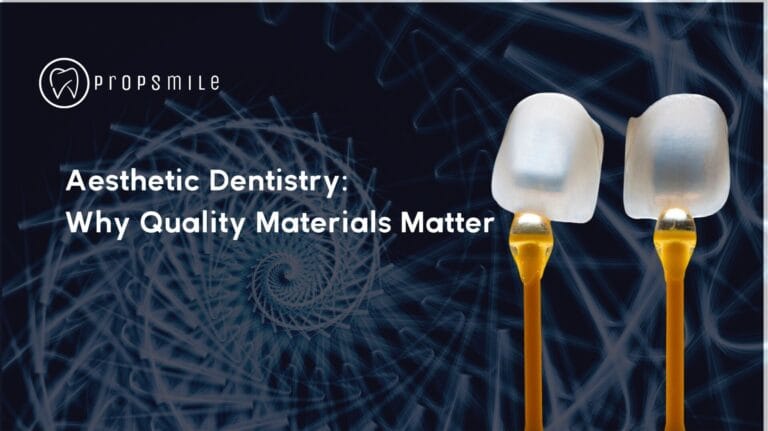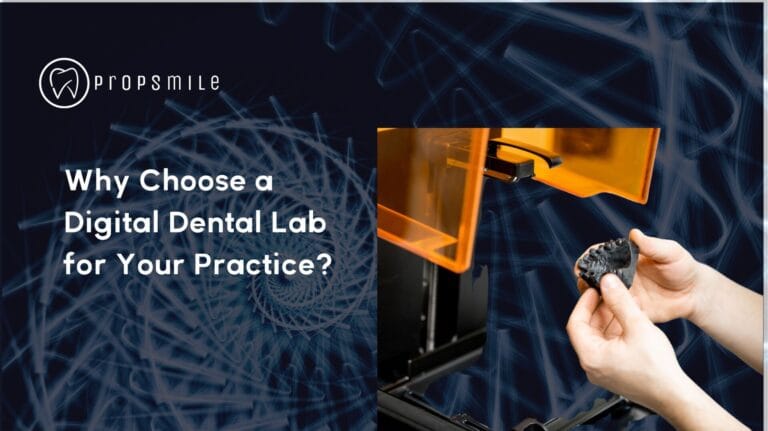Guided Surgery Dental Lab: Elevating Implant Success Rates
Guided surgery has become a cornerstone of modern dental implantology, offering clinicians the tools to achieve predictable and precise outcomes. By leveraging advanced planning software, 3D imaging, and custom surgical guides, guided surgery minimizes risks, reduces surgical time, and enhances patient satisfaction. This approach not only improves clinical efficiency but also ensures that implants are placed with the highest degree of accuracy.
1. What is Guided Surgery?
Guided surgery involves the use of pre-designed surgical guides that are created based on a patient’s 3D imaging data. These guides help dentists achieve precise angulation, depth, and positioning of implants, ensuring optimal outcomes in even the most challenging cases.
2. How Does Guided Surgery Improve Implant Success?
Guided surgery enhances implant success by reducing errors, minimizing invasiveness, and ensuring a seamless integration with the patient’s anatomy. Accurate planning reduces the risk of complications and accelerates healing times.
The Role of Guided Surgery in Implants
Guided surgery plays a critical role in modern implantology, transforming traditional techniques into more predictable and efficient procedures. This section explores its importance in dental implantology and its ability to improve clinical and patient outcomes.
1. How Does Guided Surgery Support Implant Placement?
- Enhanced Visualization: Guided surgery provides a 3D view of the patient’s anatomy, allowing clinicians to visualize bone density, nerve pathways, and sinus locations.
- Pre-Surgical Planning: By planning the procedure in advance, clinicians can determine the optimal implant position, avoiding anatomical structures and ensuring a better fit.
2. What Problems Does Guided Surgery Solve?
- Reduced Surgical Errors: Traditional freehand implant placement often leads to deviations, increasing the risk of failure. Guided surgery eliminates this uncertainty by providing precise placement paths.
- Improved Aesthetic Outcomes: For anterior implants, achieving proper alignment is crucial for aesthetics. Guided surgery ensures that implants are positioned to support natural-looking restorations.
3. Case Studies Highlighting the Role of Guided Surgery
- Complex Cases Made Simpler: A patient with limited bone structure successfully received implants using guided surgery, reducing the need for bone grafting and ensuring a precise fit.
- Time-Saving Procedures: Guided surgery reduced operative time by 30% for a multi-unit implant case, improving both efficiency and patient comfort.
Benefits for Precision and Predictability
Guided surgery offers significant benefits in terms of precision and predictability, making it a preferred method for both routine and complex implant cases.
1. How Does Guided Surgery Improve Precision?
- Accurate Implant Placement: With custom guides, implants are placed exactly where planned, ensuring proper angulation, depth, and positioning.
- Enhanced Stability: Precise placement improves implant stability, reducing the risk of failure and promoting osseointegration.
2. Predictability in Implant Surgery
- Reproducible Outcomes: Guided surgery enables dentists to achieve consistent results across multiple cases, building confidence in treatment plans.
- Reduced Chair Time: By pre-planning the procedure, guided surgery minimizes intraoperative decision-making, reducing chair time and enhancing patient experience.
3. Clinical Examples of Improved Predictability
- Single-Tooth Replacements: Guided surgery ensures perfect alignment, even in tight spaces.
- Full-Arch Restorations: With guided surgery, multi-unit implants can be placed with consistent spacing and angulation, supporting better prosthetic outcomes.
Guided Surgery Solutions at PropSmile Lab
PropSmile Lab specializes in creating customized solutions for guided surgery, offering dental practices the tools and expertise needed for successful implant procedures.
1. Custom Surgical Guides for Every Case
- Patient-Specific Guides: PropSmile designs guides tailored to each patient’s anatomy, ensuring precise implant placement.
- High-Quality Materials: Guides are manufactured using durable, biocompatible materials, providing reliable support during surgery.
2. How PropSmile Supports Clinicians
- Pre-Surgical Consultations: PropSmile offers detailed consultations to help dentists plan each case, reviewing 3D imaging and ensuring the surgical guide meets clinical needs.
- Quick Turnaround Times: With state-of-the-art equipment, PropSmile delivers surgical guides promptly, keeping procedures on schedule.
3. Case Studies of Success
- Efficient Multi-Unit Placements: PropSmile’s guides reduced surgical time by 40% in a complex full-arch restoration, ensuring precise implant alignment.
- Enhanced Patient Outcomes: Aesthetic cases saw significant improvement in implant positioning, supporting natural-looking restorations.
Laboratory Role in Planning Guided Surgery
The dental laboratory plays an essential role in planning guided surgery, serving as the bridge between diagnostic imaging and clinical execution.
1. How Labs Collaborate with Dentists
- 3D Imaging and Analysis: Labs use CBCT scans to analyze bone density, anatomy, and implant site conditions, creating a detailed surgical plan.
- Designing Surgical Guides: Based on the clinician’s input, the lab designs and fabricates guides that ensure precise implant placement.
2. The Lab’s Expertise in Guided Surgery
- Advanced Software Integration: Labs use specialized software to align implant positions with prosthetic outcomes, ensuring functional and aesthetic results.
- Prosthetic Planning: The lab collaborates with dentists to design restorations that complement the guided surgery plan, ensuring seamless integration.
3. Case Examples
- Immediate Loading Cases: Labs plan guides that allow for immediate loading, reducing treatment times and enhancing patient satisfaction.
- Sinus Lift and Graft Integration: For complex cases, labs create guides that incorporate sinus lift or graft requirements, simplifying surgery.
Digital Technology in Implant Laboratory Procedures
Digital technology has revolutionized implant laboratory procedures, making guided surgery more accessible and efficient.
1. How Technology Streamlines Implant Planning
- CBCT Imaging: Cone Beam CT scans provide accurate 3D models of the patient’s anatomy, forming the foundation for guided surgery.
- CAD/CAM Integration: Computer-aided design ensures that surgical guides and restorations are manufactured to precise specifications.
2. Benefits of a Fully Digital Workflow
- Reduced Errors: Digital workflows eliminate manual errors, ensuring precise alignment between implant placement and prosthetic outcomes.
- Faster Turnaround Times: Digital processes accelerate the design and manufacturing of surgical guides, keeping procedures on schedule.
3. Case Study: Digital Planning at PropSmile
- Efficient Case Management: PropSmile’s digital workflow reduced the planning time for a multi-unit implant case by 50%, allowing for faster treatment.
Ensuring Accuracy with Custom-Made Guides
Custom-made surgical guides are the cornerstone of guided surgery, offering unparalleled accuracy in implant placement.
1. How Custom Guides Improve Accuracy
- Patient-Specific Design: Each guide is designed to fit the patient’s unique anatomy, ensuring precise implant positioning.
- Stabilization During Surgery: Custom guides provide stability, reducing movement and ensuring accurate placement.
2. The Fabrication Process for Custom Guides
- Data Collection: Labs use CBCT scans and digital impressions to create detailed models of the patient’s mouth.
- Guide Manufacturing: Using CAD/CAM technology, the guide is milled or 3D-printed to exact specifications.
3. Real-Life Applications
- Challenging Cases Simplified: For patients with limited bone structure, custom guides ensure implants are placed in optimal positions.
- Improved Long-Term Outcomes: Accurate placement supports better osseointegration and reduces the risk of complications.
Additional Topics
Patient Benefits from Guided Surgery
Patients benefit significantly from guided surgery, experiencing faster recovery times, reduced discomfort, and more predictable outcomes. Guided surgery minimizes invasiveness, leading to less post-operative pain and swelling.
The Future of Guided Surgery in Dental Implants
Guided surgery is set to become even more advanced with the integration of AI and robotics. AI-driven diagnostics and robotic-assisted surgery promise to enhance precision, reduce errors, and further improve patient outcomes.
Training and Education for Guided Implant Surgery
As guided surgery becomes more prevalent, training programs for clinicians and technicians are essential. These programs cover everything from CBCT imaging to surgical guide fabrication, ensuring that dental teams are fully equipped to handle guided implant procedures.
Additional Topics
The following additional topics provide a deeper understanding of what makes an ideal dental lab partner, focusing on practical considerations like cost-effectiveness, service flexibility, and environmental responsibility.
Cost-Effectiveness Without Compromising Quality
In the dental industry, balancing cost with quality is a crucial consideration. Patients expect high-quality restorations, yet dental practices also need to manage costs to stay competitive. Here’s how to identify a lab that offers affordable solutions without sacrificing excellence.
1. The Role of Automation in Cost Reduction
- Lower Labor Costs: By leveraging automation, digital labs can reduce manual labor requirements. Automated processes streamline production, cutting down on time and cost while maintaining high-quality standards.
- Efficient Use of Materials: Digital workflows allow labs to use materials efficiently, minimizing waste and lowering costs. For instance, CAD/CAM milling ensures that only the necessary amount of material is used, helping labs manage expenses without compromising quality.
2. Competitive Pricing with High-Quality Outcomes
- Comparing Price and Value: A cost-effective lab doesn’t just offer low prices—it provides significant value for the cost. The ideal lab partner should be transparent about pricing structures, ensuring there are no hidden fees or unexpected costs.
- Case Studies of Success: Look for labs that have a track record of offering quality restorations at competitive prices. Case studies or testimonials can give insight into the lab’s ability to provide cost-effective solutions without compromising on the quality that patients expect.
3. Flexible Payment Options and Volume Discounts
- Volume Discounts for High-Order Practices: Some labs offer discounts for larger orders, making it more affordable for high-volume practices. This type of pricing structure benefits practices that have a steady flow of cases and need a reliable lab partner for consistent results.
- Flexible Payment Plans: In addition to volume discounts, look for labs that offer payment flexibility. This can include options like monthly invoicing, financing for larger cases, or deferred payment plans for practices managing high case loads.
Customizability and Flexibility in Lab Services
A dental lab that offers flexible services can support a practice’s ability to provide personalized care. Customizability and flexibility in lab services are essential for practices that handle a variety of cases, from standard restorations to complex aesthetic procedures.
1. Importance of Customization in Dental Restorations
- Meeting Patient Expectations: Patients today have high expectations for personalized treatment, especially when it comes to aesthetic restorations. A flexible lab allows you to select custom shades, specific materials, or particular design elements that align with each patient’s unique needs.
- Case Complexity and Specialized Services: For complex cases—such as full-mouth rehabilitations or implant-supported restorations—flexibility in lab services is critical. A lab that can tailor its workflow for advanced cases offers significant support for practices specializing in intricate procedures.
2. Adaptability for Rush Cases and Special Requests
- Handling Urgent Cases: In dentistry, some cases require expedited service. Look for a lab partner that offers flexibility to prioritize urgent cases, ensuring patients receive their restorations promptly.
- Supporting Special Requests: Patients may have specific requirements or preferences, such as allergy considerations or a preference for a particular material. The best labs accommodate these requests, making adjustments as necessary to meet individual needs.
3. Case Study: Customized Solutions at PropSmile
- How PropSmile Adapts to Client Needs: PropSmile is known for its flexibility in handling special cases, offering customized solutions that meet the highest standards. For example, they provide detailed shade matching for aesthetic cases and use biocompatible materials for patients with sensitivities.
- Working with Your Practice’s Workflow: PropSmile’s flexible services include the ability to adjust to different practices’ workflows, making it easy for dental offices to integrate PropSmile’s services into their daily routines seamlessly.
Sustainability and Environmentally Friendly Practices
As environmental awareness grows, many dental practices are looking for lab partners that prioritize sustainability. Eco-friendly practices are increasingly important to patients, making sustainability a valuable consideration when choosing a dental lab partner.
1. Reducing Environmental Impact Through Material Management
- Eco-Friendly Material Sourcing: A sustainable lab uses materials that are responsibly sourced and considers the environmental impact of each restoration. This may include using recyclable packaging, biocompatible materials, and non-toxic dyes for color matching.
- Waste Minimization: Labs that adopt digital workflows can significantly reduce waste compared to traditional methods. For instance, CAD/CAM technology minimizes material waste by using only what is necessary, and digital impressions eliminate the need for disposable trays and impression materials.
2. Energy Efficiency and Reduced Carbon Footprint
- Energy-Efficient Equipment: Advanced dental labs invest in energy-efficient machinery and lighting to reduce their carbon footprint. High-efficiency 3D printers, milling machines, and LED lighting contribute to a more sustainable operation.
- Green Manufacturing Processes: Some labs have implemented green manufacturing practices, such as using renewable energy sources or recycling materials. Choosing a lab with these practices demonstrates a commitment to environmental responsibility, appealing to patients who value eco-conscious choices.
3. Long-Term Sustainability Goals
- Commitment to Continuous Improvement: The most sustainable labs go beyond initial efforts, setting long-term goals to improve their practices. This can include pledges to further reduce energy consumption, switch to entirely recyclable packaging, or adopt even more efficient machinery over time.
- Patient-Friendly Messaging on Sustainability: By partnering with a sustainable lab, practices can highlight their commitment to environmental stewardship in their patient communications. Many patients appreciate eco-conscious efforts, and choosing a green lab partner can enhance a practice’s reputation.

